It is generally accepted that tests must be taken directly in the acute phase of the disease, to monitor the rate of indicators, but this is not always true. A complete blood count is recommended for children every six months for prophylaxis in order to prevent complications.
Record content:
- 1 What does a complete blood count show
- 2 When a study is prescribed for children
- 3 Performance standards from birth to 18 years
- 4 How to prepare for the study
- 5 How is the sampling of biomaterial
- 6 How long to wait for research results
- 7 Decoding analysis responses
- 8 Reasons for deviations of indicators from the norm
- 9 What can affect the credibility of a study?
-
10 What if there are abnormalities in the general analysis of the child's blood?
- 10.1 Erythrocytes
- 10.2 Hemoglobin
- 10.3 Changing the color indicator
- 10.4 Leukocytes
- 10.5 Leukocyte formula
- 10.6 Platelets
- 10.7 ESR
- 11 Where is the research done?
- 12 Video about UAC in children
What does a complete blood count show
Otherwise a complete blood count is called clinical and with its help you can investigate the composition of the blood. It can be shortened or expanded. A general blood test in children, the norm of which is established by the WHO, is highly informative, since any disorders in the immune system will certainly affect the composition of the blood.
Among the main indicators:
- hemoglobin - when it decreases, the patient experiences weakness and dizziness;
- reticulocytes - deviations from the norm indicate a disruption in the functioning of the bone marrow, as well as renal failure;
- platelets - one of the main indicators, can reveal an inflammatory process and infection of any etiology;
- ESR - shows the presence of infection in the form of ARVI, tonsillitis, flu;
- leukocytes - in case of any malfunctions from the norm, it indicates serious pathologies from an allergic reaction to mononucleosis;
- plasma cells - detect viral infections, are overestimated even in a recently ill child;
- thrombocrit - this indicator indicates a tendency to thrombosis and bleeding;
-
eosinophils - perform the function of protecting blood from pathogenic microorganisms;
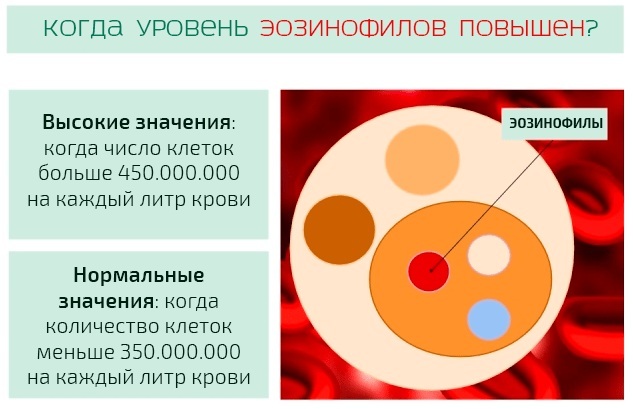
- basophils - the category of leukocytes, increases as a result of an allergic reaction, poisoning, infection.
When a study is prescribed for children
A general blood test in children, the normal value of which is important to constantly maintain, is prescribed to children for prophylaxis. This is the fastest, most affordable and effective research method through which you can determine the presence of the virus in the body.
There are several reasons why a pediatrician prescribes a complete blood count:
- examination of the newborn - as a rule, on the 4th day after birth, blood is taken from the baby's heel. This analysis makes it possible to exclude such hereditary diseases in a child as galactosemia, phenylketonuria, hypothyroidism, cystic fibrosis and adrenogenital syndrome;
- routine blood tests at 3, 9 and 12 months, then annually - in the first year of life, it is especially important to monitor the condition of the child, since the risk of developing anemia is high;
- before vaccination - inflammation is a direct contraindication for vaccinating a child;
- bronchitis, acute respiratory infections, flu or pneumonia - in this case, a general blood test will help prescribe the correct treatment and decide on the rationality of antibiotics.
Performance standards from birth to 18 years
The values of the indicators depend on the presence of the disease:
| Index | Age category | ||||
| 1 month | 6 months | 12 months | 2-5 years | 6-18 years old | |
| Hb (hemoglobin, g / l) | 115-175 | 110-140 | 110-135 | 110-140 | 110-145 |
| RDC (erythrocytes) | 2,8-4,9 | 3,5-4,8 | 3,5-4,9 | 3,5-4,5 | 4-5,2 |
| RTC (reticulocytes) | 0,25-0,9 | 0,2-1 | 0,2-0,6 | 0,2-1,3 | |
| PLT (platelets) | 180-400 | 160-390 | 160-380 | ||
| ESR (ESR, mm / h) | 2-4 | 3-10 | 5-11 | 4-12 | |
| WBC (leukocytes,%) | 6-17,5 | 6-17 | 5,5-15,5 | 4,5-3,5 | |
| EOS (eosinophils,%) | 1-6 | 1-5 | 1-7 | 1-6 | 1-5 |
| LYM (lymphocytes,%) | 22-55 | 46-70 | 38-60 | 32-56 | 30-50 |
| MON (monocytes,%) | 5-15 | 4-10 | 3-10 | 3-9 | |
| BAS (basophils,%) | 0-0,5 | ||||
| MCHC (color index,%) | 0,85-1-15 |

The results are interpreted by the pediatrician. Modern medicine performs analyzes using new technologies, so the results are more accurate than in previous years.
How to prepare for the study
You should show up for examination on an empty stomach, preferably in the morning. However, drinking water is not prohibited. This rule does not apply to breastfed babies, but it is still better to donate blood between feedings. If the baby is under severe stress during the blood draw, you can apply it to the breast at this point. You must have a pacifier or water bottle with you.
If a child is taking medications that may affect blood counts, it is worth consulting a pediatrician and, if necessary, suspend their intake. During preschool age, an adult must accompany the child to the treatment room. It is not recommended to take a blood test immediately after a massage, ultrasound or X-ray, as well as after physiotherapy procedures.
How is the sampling of biomaterial
Most often, a general blood test is taken from a child's finger. But if you need to get a detailed study, it is better to use blood from a vein for this. The patient's hands must be clean.
Blood sampling is performed according to the following algorithm:
- Wipe your fingertip with an alcohol wipe at the puncture site.
- With the help of an automatic scarifier, a puncture is made with a depth of 2-3 mm.
- The resulting drop of blood is collected with a glass pipette, if necessary, lightly pressing on the pad of the finger.
- The resulting blood is poured into a special flask, some of it is placed on a glass plate.
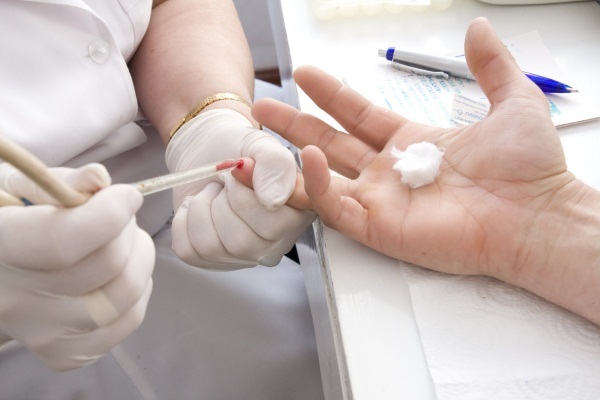
- At the end of the procedure, an alcohol wipe is applied to the puncture, it must be held for a little while until the blood stops.
When taking venous blood, the child's forearm is tied with a tourniquet, the vein on the inside of the elbow is pierced with a thin needle. The blood is collected in a flask. After the procedure, the hand should be kept bent at the elbow for 3-5 minutes.
How long to wait for research results
A general blood test in children, the norm of values of which is approved by the WHO, is done from 1 to 3 working days. This does not include weekends and holidays. If the analysis was carried out in a state clinic, the result can be found with the local nurse or pediatrician.
In private clinics, the test results can be printed on the website of the medical institution or taken from the place where the blood was taken. In addition, it is in paid clinics that there is an urgent result service. Within 2 hours, you can get a transcript of the analysis, but for an additional fee.
Decoding analysis responses
A general blood test is a mandatory type of diagnosis of many diseases in children, and the results of the study may even indicate such serious pathologies as cancer.
In addition, when decoding the analysis, attention is paid to the norm:
- erythrocytes - if their level is reduced, we can talk about anemia and vitamin deficiency, while an increased indicator means the presence of chronic diseases;
-
hemoglobin - an increased indicator may mean irregularities in the work of the heart, its defects, increased blood density and its disease, and a reduced level is a direct sign of anemia;
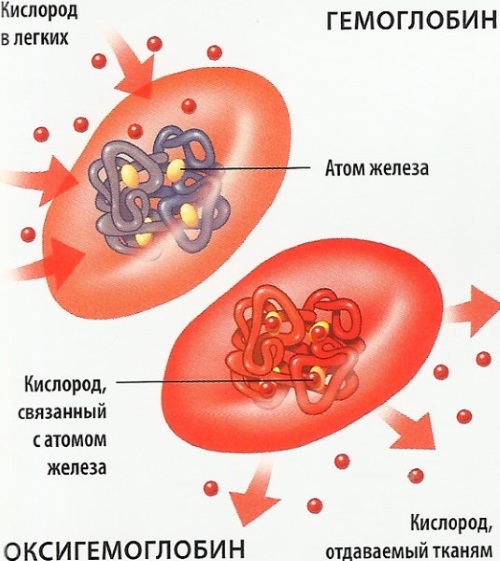
- platelets - a high value is a consequence of the inflammatory process in the child's body, and there is also a likelihood of tuberculous changes, low platelets can be in premature babies;
- leukocytes - their high level indicates the presence of infection or leukemia in the newborn, and the cause may also be stress, improper diet. A decrease in leukocytes can indicate infection, radiation sickness, allergies, or depletion of the body;
- ESR - an overestimated value is possible with kidney pathology, anemia and the presence of inflammation, and a decrease is a sign of depletion and lack of nutrients;
- neutrophils - their decrease is the result of infection, dystrophy or exposure to radiation, and an overestimated number indicates an inflammatory process, a serious disease of the circulatory system;
- monocytes - increase due to malignant neoplasm, heart problems, tuberculosis and the presence of a virus in the body, and monocytes decrease as a result of such serious diseases as leukemia, radiation sickness and with pathologies of bone brain;
- eosinophils - a high level is characteristic in the presence of lichen, skin dermatitis, parasites, as well as in acute allergic reactions. A low rate is likely with a bacterial infection;
- basophils - their rate may be overestimated due to leukemia, thyroid diseases, anemia and malfunctions of the intestines and stomach;
- plasma cells - exceeding the norm is a symptom of measles, chickenpox.
When deciphering the results and making a diagnosis, you should not limit yourself to a clinical analysis, it is necessary to take into account the concomitant symptoms of the disease. In addition, during treatment, you need to take a general blood test several times.
Reasons for deviations of indicators from the norm
The composition of the blood changes rapidly as a result of exposure to bacteria and abnormal cells. A deviation from the norm of any element means malfunctioning of the child's body. Often, diseases require immediate medical attention.
Thus, a timely examination of the blood helps to quickly detect the pathological process and prevent the consequences, make the correct diagnosis and prescribe an effective treatment.
What can affect the credibility of a study?
Preparation for a general blood test is necessary and requires the specific rules listed above.
In addition to them, the following factors can affect the reliability of the study:
- physical activity - they should be avoided during the day before blood sampling;
- stress and nervous tension;
- time of day - it is better to take tests in the morning;
- taking medications;
- dinner before the morning blood donation should be light, since excessive consumption of fatty foods leads to an excess of fat in the blood and a violation of the effectiveness of the analysis;
- within 2 hours it is not recommended to carry out physiotherapeutic procedures, as well as ultrasound, x-rays and massage;
- it is better to be at rest before donating blood.
What if there are abnormalities in the general analysis of the child's blood?
After receiving the results of the analysis, the doctor must identify the pathology, diagnose and prescribe treatment. Each item will indicate the likelihood of a particular disease.
Erythrocytes
With their increased content, the blood becomes thick and viscous, which significantly reduces circulation. This may be accompanied by headaches, loss of consciousness and bleeding of the nasal mucosa. Serious illnesses such as pneumonia, kidney disease, asthma and heart disease can be dangerous.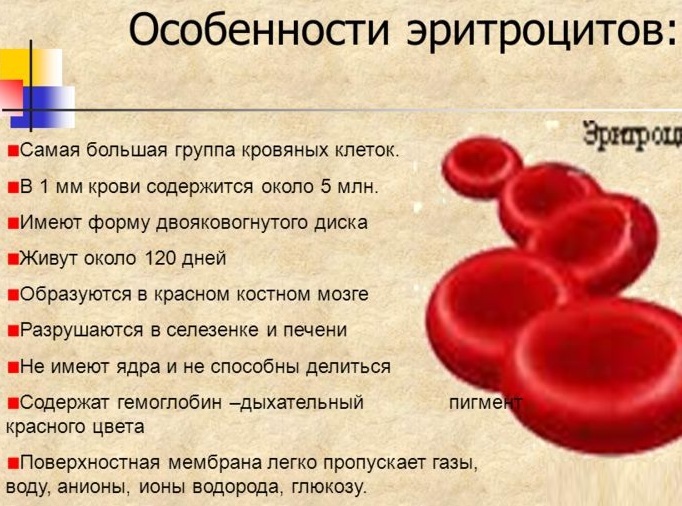
It is worth paying attention to the level of reticulocytes, since its growth in dynamics means that the balance of red blood cells is restored. Otherwise, it is necessary to consult a pediatric hematologist who will determine the nature of these disorders.
The opposite concept of erythrocytosis is erythropenia. This is a decrease in the level of red blood cells, and probable diseases can be anemia, vitamin deficiency, poisoning and the presence of malignant tumors.
To prevent erythrocytosis, you need to give the child only purified water, because tap water, due to the high chlorine content, helps to increase red blood cells. Fresh vegetables and fruits must be present in the child's diet, they help the formation of new, healthy red blood cells.
To lower your red blood cell count, you need to eat beans, raisins, spinach, cereals, prunes, and cabbage. Also, the child needs daily walks in the fresh air.
Hemoglobin
This indicator is very important for the child's body, its insufficiency can affect the development of the brain. Oxygen starvation occurs, which cannot but cause a number of diseases. Statistics say that about 50% of preschool children suffer from anemia.
This is fraught with a delay in mental and physical development, skin problems, and malfunctioning of the immune system. In order to detect low hemoglobin in time, it is better to take a general blood test every 3 months.
Key recommendations for maintaining normal hemoglobin levels:
- you should not give your child vitamin complexes without analysis and consultation with a pediatrician;
- fresh vegetables, fruits and nuts should be present in the diet every day;
- breastfeeding is best done for at least 1 year;
- daily walks in the fresh air are required for 2-3 hours, and you also need to provide the child with physical activity;
- it is necessary to exclude semi-finished products, food waste in the form of sauces and carbonated drinks from the child's diet.
Changing the color indicator
The color indicator determines how much red blood cells are filled with hemoglobin.
As a result of the analysis, there can be 3 options for a color indicator:
- hyperchromic - a clear sign of anemia, vitamin deficiency, malignant tumors;
- normochromic;
- hypochromic - detected as a result of blood loss, anemia.
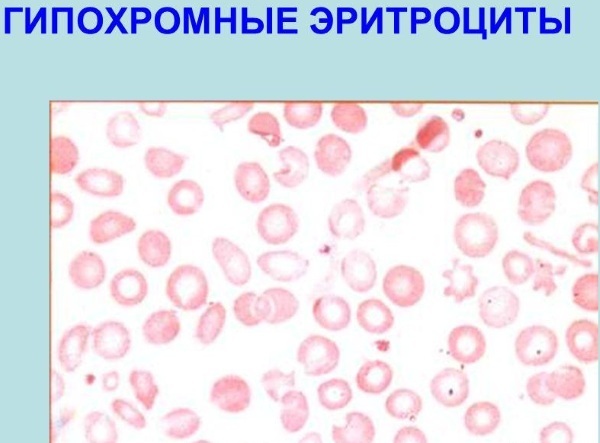
The norm of the color index in children under 3 years old is from 0.75 to 0.96. After 4 years from 0.8 to 1.
You should not draw conclusions regarding the diagnosis based solely on the color indicator.
Leukocytes
With an increased leukocyte count, we are talking about leukocytosis. However, a slight increase does not necessarily indicate a serious illness.
This could be the result:
- complementary foods;
- long exposure to the sun;
- stress;
- physical activity.
Leukocytes increase when any changes have occurred in the body. That is, they function as a protective barrier. If the level of leukocytes is exceeded by 2-3 times, we are talking about pathology.
The worst situation causes a lowered white blood cell count. In 90% of cases, this indicates a disease requiring treatment. With rare exceptions, the decrease in leukocytes can be stopped by diet. But more often we are talking about an infection that can only be cured with medications.
Sufficient independent ways to eliminate leukocytosis are:
- correct, balanced nutrition;
- day and night regime;
- daily walks;
- hygiene procedures.
Leukocyte formula
A general blood test in children, the normal interpretation of which is an important stage of diagnosis, shows the quantitative state of leukocytes. For this, an extended analysis is carried out with a leukocyte formula, which makes it possible to accurately determine for what reason the indicators are violated.
There are several types of white blood cells:
- neutrophils - an important element, performs a protective function, detects pathological bacteria, and destroys them;
- basophils - prevent the spread of toxins through the circulatory system;
- eosinophils - protect the body from parasites, participate in allergic reactions;
- lymphocytes - destroy harmful cells, including cancerous ones, prevent the infection from progressing;
- monocytes - participate in the destruction of pathological and harmful cells.
In case of deviations in the indicators in the leukocyte formula, the following should be performed:
- pediatrician recommendations;
- consultation with a hematologist;
- correction of nutrition and drinking regime.
Platelets
The main task of these blood cells is to prevent bleeding. With an increased value of platelets, one speaks of thrombocytosis.
It can occur due to:
- transferred infection;
- lack of iron in the blood;
- acute infection of various etiology;
- surgery, inflammatory process;
- taking certain medications.
A low platelet count is called thrombocytopenia. This condition is more dangerous, fraught with severe blood loss. With such a pathology, an urgent appeal to a hematologist is required, who will prescribe treatment.
In addition, if your platelet count is critically low, you may need to blood transfusion, and it is also mandatory to take drugs that restore the normal amount platelets.
ESR
The erythrocyte sedimentation rate indicates the presence of inflammation in the body.
An increase in ESR may be due to:
- infectious disease;
- bleeding;
- allergies;
- malfunction of hormones;
- diseases of the thyroid gland;
- malignant neoplasm.
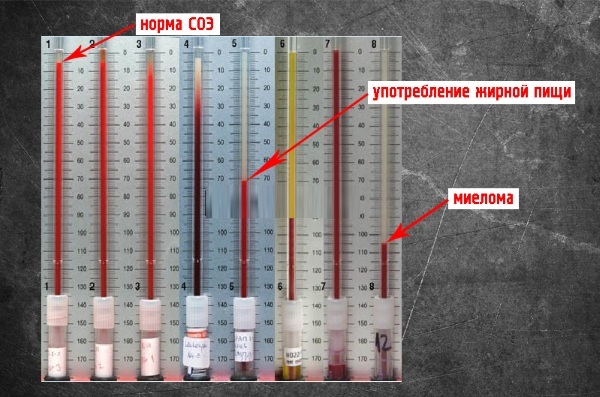
Complete blood count in children. ESR is normal
If the child is breastfed, ESR may increase due to teething, vitamin deficiency, and also due to the mother's improper diet.
To restore the ESR level, a complete examination of the child will be required, namely:
- a blood test for biochemical composition;
- a study of blood sugar levels;
- hormonal examination;
- stool analysis to identify parasites;
- fluorography or x-ray;
- Ultrasound of the digestive system and spleen.
As a rule, the pediatrician prescribes a course of taking antibiotics, antiallergic drugs, and also antiviral drugs. Fiber should be included in the diet daily.
Where is the research done?
A general blood test can be taken not only in public medical institutions, but also in private clinics, but the service will already be paid. Due to the imperfection of state medicine, modern patients prefer private medical centers, their advantage is as follows:
- almost complete absence of a queue, since the recording is carried out in advance, strictly in time. This is the main criterion for the working population, because in a state polyclinic it is difficult to predict how long the analysis will take;
- you can take a clinical blood test on your own initiative, without a referral from a pediatrician;
- quick result - literally within 1 day you can get a transcript of the analysis with a detailed analysis of each indicator;
- high accuracy of the result - in most private clinics, the latest technology is involved in the analysis of biological material.
The most popular clinics for taking a general blood test are:
- Invitro - a medical center operating in 290 cities of Russia, clinics are equipped with new European equipment. Invitro provides a service of blood sampling with a visit to the patient's home, which is convenient for mothers with children. The patient is informed about the readiness of the analysis by SMS no later than 1 day after the analysis;
- Hemotest - a clinic with 300 branches throughout the country, the result of the study can be obtained in any convenient way (by fax, mail, in the personal account on the clinic's website);
- Citylab - a clinic with offices in 86 cities of Russia, the institution provides discounts for certain categories of citizens.
It is necessary to choose a medical institution for taking a general blood test geographically. Since during a trip to a remote clinic, the result of the analysis and the indicator of the norm may be incorrect due to hypothermia in the child, stress or physical exertion.
Article design: Vladimir the Great
Video about UAC in children
Komarovsky about a blood test:



